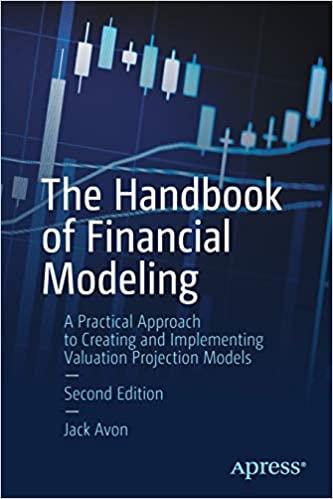Case Studies in Finance 7th edition: Case #15
Use the correct inputs to determine the (1) cost of equity using the CAPM methodology. Then use the cost of equity and other inputs to determine (2) the weighted average cost of capital (WACC). Please show all work and take all intermediate calculations out to 4 decimal places. Refer to Case 13 and the Case 15 Analysis to help you to do your work correctly.







15 Nike, Inc.: Cost of Capital On July 5, 2001, Kimi Ford. a portfolio manager at NorthPoint Group, a mutual-fund management firm, pored over analysts' write-ups of Nike, Inc., the athletic-shoe man- ufacturer, Nike's share price had declined significantly from the beginning of the year. Ford was considering buying some shares for the fund she managed, the NorthPoint Large-Cap Fund, which invested mostly in Fortune 500 companies, with an emphasis on value investing. Its top holdings included ExxonMobil, General Motors. McDonald's, 3M, and other large-cap, generally old-economy stocks. While the stock market had declined over the last 18 months. the NorthPoint Large-Cap Fund had performed extremely well. In 2000, the fund earned a return of 20.7%, even as the S&P 500 fell 10.1%. At the end of June 2001, the fund's year-to-date returns stood at 6.4% versus 7.3% for the S&P 500 Only a week earlier, on June 28, 2001, Nike had held an analysts' meeting to dis- close its fiscal year 2001 results. The meeting, however, had another purpose: Nike management wanted to communicate a strategy for revitalizing the company. Since 1997, its revenues had plateaued at around $9 billion, while net income had fallen from almost $800 million to $580 million (see Exhibit 1). Nike's market share in U.S. athletic shoes had fallen from 48%, in 1997, to 42% in 2000. In addition, recent supply-chain issues and the adverse effect of a strong dollar had negatively affected At the meeting, management revealed plans to address both top-line growth and operating performance. To boost revenue, the company would develop more athletic- shoe products in the midpriced segment a segment that Nike had overlooked in recent years. Nike also planned to push its apparel line, which, under the recent leadership of Nike's fiscal year ended in May Douglas Robson, "Just Do Something: Nike's insularity and Foot-Dragging Have l Running in Place BusinessWeek, July 2001) 'sneakers in this segment sold for $70-s90 a pair. This case was prepared from publicly available information by Jessica Chan. under the supervision of Robert F Bruner and with the assistance of Sean D. Cam. The financial support of the Batten Institute is gratefully acknowledged. It was written as a basis for class discussion rather than to illustrate effective or ineffective handling of an administrative situation. Copyright o 2001 by the University of Virginia Darden School Foundation, Charlottesville, VA. All rights reserved. To order copies, send an e-mail to sales dardenbusinesspublishing.com. No part of this publication may be reproduced, stored in a retrieval system, used in a spreadsheet, or transmitted in any form or by any means- electronic. mechanical, photocopying, recording, or onhenwise-without the permission of the Danden School Fowndation. Rev. l005. 15 Nike, Inc.: Cost of Capital On July 5, 2001, Kimi Ford. a portfolio manager at NorthPoint Group, a mutual-fund management firm, pored over analysts' write-ups of Nike, Inc., the athletic-shoe man- ufacturer, Nike's share price had declined significantly from the beginning of the year. Ford was considering buying some shares for the fund she managed, the NorthPoint Large-Cap Fund, which invested mostly in Fortune 500 companies, with an emphasis on value investing. Its top holdings included ExxonMobil, General Motors. McDonald's, 3M, and other large-cap, generally old-economy stocks. While the stock market had declined over the last 18 months. the NorthPoint Large-Cap Fund had performed extremely well. In 2000, the fund earned a return of 20.7%, even as the S&P 500 fell 10.1%. At the end of June 2001, the fund's year-to-date returns stood at 6.4% versus 7.3% for the S&P 500 Only a week earlier, on June 28, 2001, Nike had held an analysts' meeting to dis- close its fiscal year 2001 results. The meeting, however, had another purpose: Nike management wanted to communicate a strategy for revitalizing the company. Since 1997, its revenues had plateaued at around $9 billion, while net income had fallen from almost $800 million to $580 million (see Exhibit 1). Nike's market share in U.S. athletic shoes had fallen from 48%, in 1997, to 42% in 2000. In addition, recent supply-chain issues and the adverse effect of a strong dollar had negatively affected At the meeting, management revealed plans to address both top-line growth and operating performance. To boost revenue, the company would develop more athletic- shoe products in the midpriced segment a segment that Nike had overlooked in recent years. Nike also planned to push its apparel line, which, under the recent leadership of Nike's fiscal year ended in May Douglas Robson, "Just Do Something: Nike's insularity and Foot-Dragging Have l Running in Place BusinessWeek, July 2001) 'sneakers in this segment sold for $70-s90 a pair. This case was prepared from publicly available information by Jessica Chan. under the supervision of Robert F Bruner and with the assistance of Sean D. Cam. The financial support of the Batten Institute is gratefully acknowledged. It was written as a basis for class discussion rather than to illustrate effective or ineffective handling of an administrative situation. Copyright o 2001 by the University of Virginia Darden School Foundation, Charlottesville, VA. All rights reserved. To order copies, send an e-mail to sales dardenbusinesspublishing.com. No part of this publication may be reproduced, stored in a retrieval system, used in a spreadsheet, or transmitted in any form or by any means- electronic. mechanical, photocopying, recording, or onhenwise-without the permission of the Danden School Fowndation. Rev. l005














